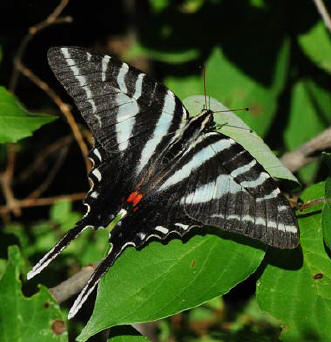Pam Van Pelt
Adams County Master Gardener
 Most gardeners spend their winters looking at plant and seed catalogs and dreaming of the projects they will start next spring. This year, I'm going to start a pawpaw patch in an area recently cleared of Tree of Heaven, which,
by the way, is a misnomer. There is nothing "heavenly" about a tree that reproduces by producing billions of seeds and by suckering, has brittle wood and crowds out all good things at the edge of the woods. But, I digress; back to the pawpaw patch. The American Pawpaw (Asimina triloba) was originally documented in the
1500s during the DeSoto expedition. It is also called prairie banana, West Virginia banana, poor man's banana, Ozark banana and possum haw. At one time, these native trees were quite common in zones 5 through 8. As an understory tree, they are not very tolerant of full sun when they are young, so clear cutting of forests
reduced their populations considerably.
Most gardeners spend their winters looking at plant and seed catalogs and dreaming of the projects they will start next spring. This year, I'm going to start a pawpaw patch in an area recently cleared of Tree of Heaven, which,
by the way, is a misnomer. There is nothing "heavenly" about a tree that reproduces by producing billions of seeds and by suckering, has brittle wood and crowds out all good things at the edge of the woods. But, I digress; back to the pawpaw patch. The American Pawpaw (Asimina triloba) was originally documented in the
1500s during the DeSoto expedition. It is also called prairie banana, West Virginia banana, poor man's banana, Ozark banana and possum haw. At one time, these native trees were quite common in zones 5 through 8. As an understory tree, they are not very tolerant of full sun when they are young, so clear cutting of forests
reduced their populations considerably.
The pawpaw produces the largest edible fruits of our native trees. The flowers are dark brown and bloom time is for six weeks, generally in April and May. The fruit looks somewhat like short bananas and tastes like a cross between a banana and vanilla custard, although the taste varies among
different cultivars. The fruits are high in minerals and have lots of vitamin C, proteins and amino acids. Harvesting of the fruit is generally in September and October. We don't see these fruits in our supermarkets because they aren't suited to automated picking and they have a very short shelf life of only two or three
days.
The trees rarely reach more than 30 feet in height and can bear fruit when they reach approximately 6 feet, usually between five and eight years of age. Because the leaves and fruit are so large, wind can be quite damaging to this small tree, so they do best where protected from strong winds. They
will also need protection from direct sun for the first few years. You can use a shade cloth or plant them beneath larger trees that allow dappled sunlight. For the best chances of survival, obtain container grown cultivars, rather than seedlings or bareroots. The roots are very easily damaged which is why the success rate
is higher with container grown specimens.
If you grow this tree with the goal of producing fruit, there are two important things to know. First, you must obtain at least two different cultivars to ensure cross pollination, since pawpaws are not self pollinating. Second, you cannot rely on bees to pollinate this type of flower. The flowers
produce an odor similar to that of rotting meat to attract blowflies or carrion beetles for cross pollination. To enhance your chances for successful pollination, you can hang chicken necks or other meats from nearby tree branches. If this does not appeal to you, the other option is hand pollination using a small
paintbrush. Very little pruning is needed, except to remove dead or damaged branches. If you happen to have mature trees, you can also use pruning as a way to stimulate new growth, since new growth is what produces fruit the following year. Once a tree is established, it will reproduce clonally forming patches of trees or
small shrubs.
 To me, the most exciting thing about this small tree is the fact it is the only plant that a Zebra Swallowtail butterfly will use to lay her eggs. The larvae feed on the young pawpaw foliage, but the adult butterfly is so
beautiful that any damaged foliage is worth it. They can produce more than one generation in a single year with the smaller butterflies earlier in the year and the larger ones later in the season. With a four-inch wingspan, the Zebra Swallowtail is the largest swallowtail in our area, and planting pawpaws will help entice
these lovely butterflies.
To me, the most exciting thing about this small tree is the fact it is the only plant that a Zebra Swallowtail butterfly will use to lay her eggs. The larvae feed on the young pawpaw foliage, but the adult butterfly is so
beautiful that any damaged foliage is worth it. They can produce more than one generation in a single year with the smaller butterflies earlier in the year and the larger ones later in the season. With a four-inch wingspan, the Zebra Swallowtail is the largest swallowtail in our area, and planting pawpaws will help entice
these lovely butterflies.
In addition to the producing large fruit and being a host plant for the Zebra Swallowtail, the seeds of a pawpaw have insecticidal properties. The bark fluids have anti-tumor properties and have been used to fight skin rashes and scarlet fever.
Even though the fruit is eaten by opossums, raccoons, foxes, squirrels, quail, turkey, and other birds, the leaves and twigs are rarely bothered by rabbits or deer. If you want the best fruit flavor, try these cultivars: Taytwo, Overlease, Sweet Alice, Sunflower and Prolific. Hopefully, in a few
years, I'll be singing the old song, "picking up pawpaws put 'em in a basket, way down yonder in the pawpaw patch".
Read other articles on trees
Read other article by Pam Van Pelt